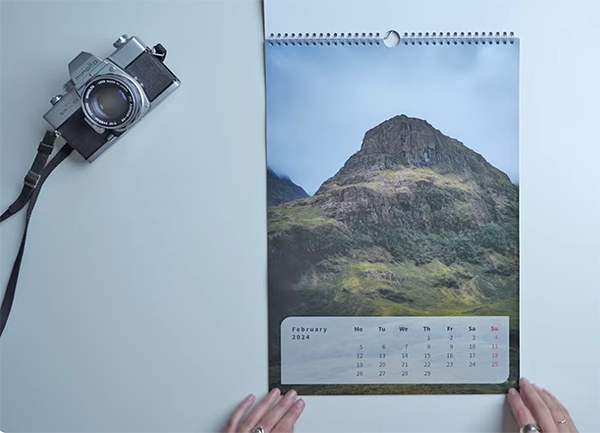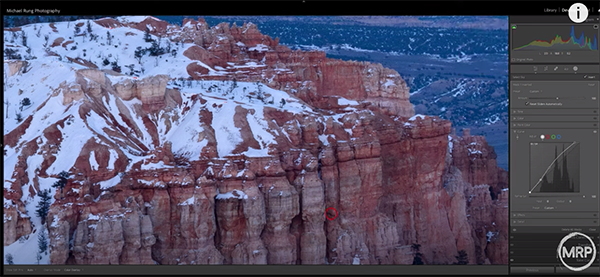‘You light it and suddenly you can take on the world’ – Claudia Winkleman raves about new CBD-infused candles
Claudia Winkleman launches two CBD-infused candles with Cannaray CBD
Wouldn’t it be nice to monetize the love of photography without quitting your day job? Even if you don’t cash in big, a few easy sales here and there will help you afford upgrading your gear while receiving some well-earned recognition in the process.
As you’ll see in the quick tutorial below, it’s not particularly difficult so sell your work, and you can do that without struggling to find clients. According to Instructor Laura BC, “There are many ways to make money with your photos, and today I’ll tell you a few of them so you can start making money. To do this you don’t need much of an investment—just your images.”
Laura is a Spanish pro who left her home country of Spain a decade ago to pursue a career as a full-time freelance photographer in London. At that time she didn’t know anyone, couldn’t speak English, and lived in a hostel with 15 other people while sleeping with her camera bag. Her fortunes have changed significantly since then, and she now regularly shares her solo photography exploits while traveling across the globe.

This episode is different than most tutorials we post because it isn’t about photo gear, camera settings, or photographic techniques. Rather, in less than 15 minutes Laura reveals a variety of time-proven methods for cashing in on your favorite hobby. Even professionals may pick up a few “forgotten” ideas for generating extra income without a lot of extra work.
Her first tip is to explore the possibilities of working with a small stock photo agency. She notes that “it’s not enough to upload random photos and expect them to sell. That may have worked in the past, but not anymore.” That’s because today’s market market is very saturated. Fortunately, you can pursue this properly and achieve some success by following Laura’s advice.
Another possibility is selling prints and posters. Despite the perceived difficulty of this approach, Laura has several great ideas to try—even if you lack a large social media following and a website with tons of traffic. One concept is to build a simple online shop using one of the many available templates. Another is to partner with an established website that will charge you a reasonable commission.

Laura has a few other ideas that aren’t difficult to pursue, like marketing your photos for use on postcards, calendars, and unique gifts. In most cases this approach won’t cost you a dime unless your photos are purchased. So you really have nothing to lose other than a bit of your time.
Bottom line: Giving this a try can be a lot of fun, especially if you don’t set expectations too high. And the rewards can be far greater than just a fatter wallet. There’s plenty more of interest on Laura’s popular YouTube channel, so be sure to pay a visit when you have time.
Lightroom’s recently updated Tone Curve is a powerful component of what Adobe enables you to achieve when processing photos. Unfortunately, this versatile tool is frequently avoided because some users find it rather intimidating.
Today’s comprehensive tutorial is designed to eliminate your trepidation by describing everything the Tone Curve can do to facilitate both basic and advanced techniques. The video is easily understandable but it covers a lot of ground, so we recommend taking a few notes while you watch.
Instructor Michael Rung is a full-time landscape photographer based in Fort Worth who says, “I’ve achieved my greatest satisfaction from teaching and developing the skills of others.” By the time you’re done watching this detailed tutorial you’ll have all the knowledge you need to harness the power of the Tone Curve in Lightroom, Lightroom Classic, and Adobe Camera Raw.

Rung covers everything necessary for photographers of all skill levels, beginning with an overview of how the Tone Curve works. As the lesson proceeds he describes more and more advanced techniques so you can start with the easy stuff and then experiment with increasingly sophisticated methods as your comfort level expands.
The myriad of tips Rung provides are illustrated with standard test patterns and real-word images so you’ll understand both the theory and practical applications. You’ll learn how to make global Tone Curve adjustments, as well as powerful masking techniques, to really refine contrast and color enhancements within your images.
Rung discusses Lightroom’s Parametric Curve and the Targeted Adjustment tool, and then moves on to a helpful explanation of the important Point Curve tool and the proper way to read it. You’ll also see how RGB Curve works and the best way to use Lightroom’s simple Refine Saturation slider. Once you get the basics under your belt, you’ll be ready for Rung’s tips on using the Tone Curve in conjunction with masking for ultimate control.

Along the way Rung provides useful keyboard shortcuts for speeding up the process, and some great examples of Tone Curve adjustments on finished images.
Bottom line: Far from being intimated by this “essential” tool, you’ll become very comfortable with everything it can do and your Lightroom workflow will become more effective than ever.
Once you’re done watching head over to Rung’s instructional YouTube channel where you’ll find other lesson’s that simplify seemingly complicated tasks.
We also recommend watching the tutorial we posted from another image-editing expert recently, demonstrating six easy Lightroom techniques for making your favorite fall photographs even better.
